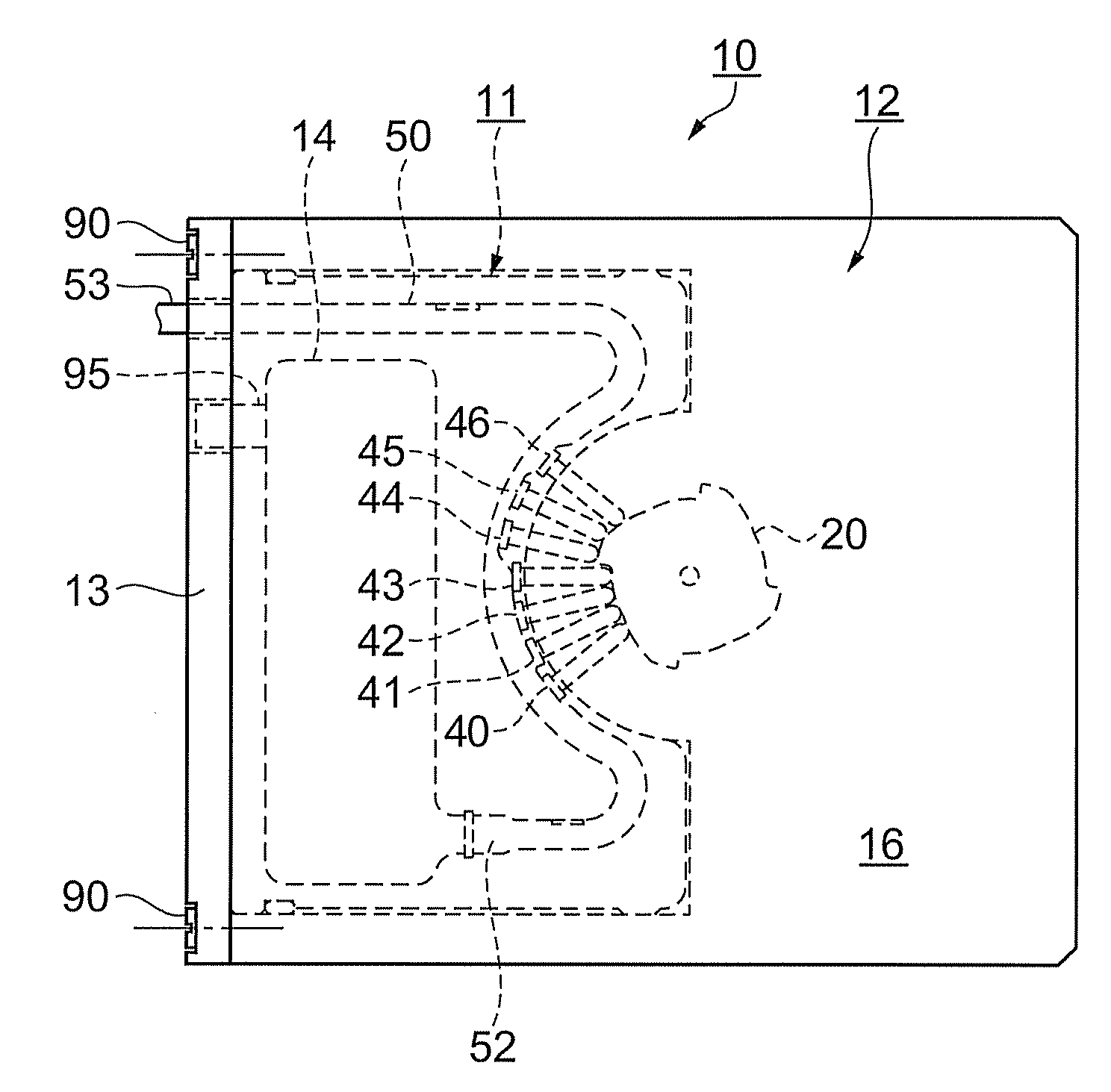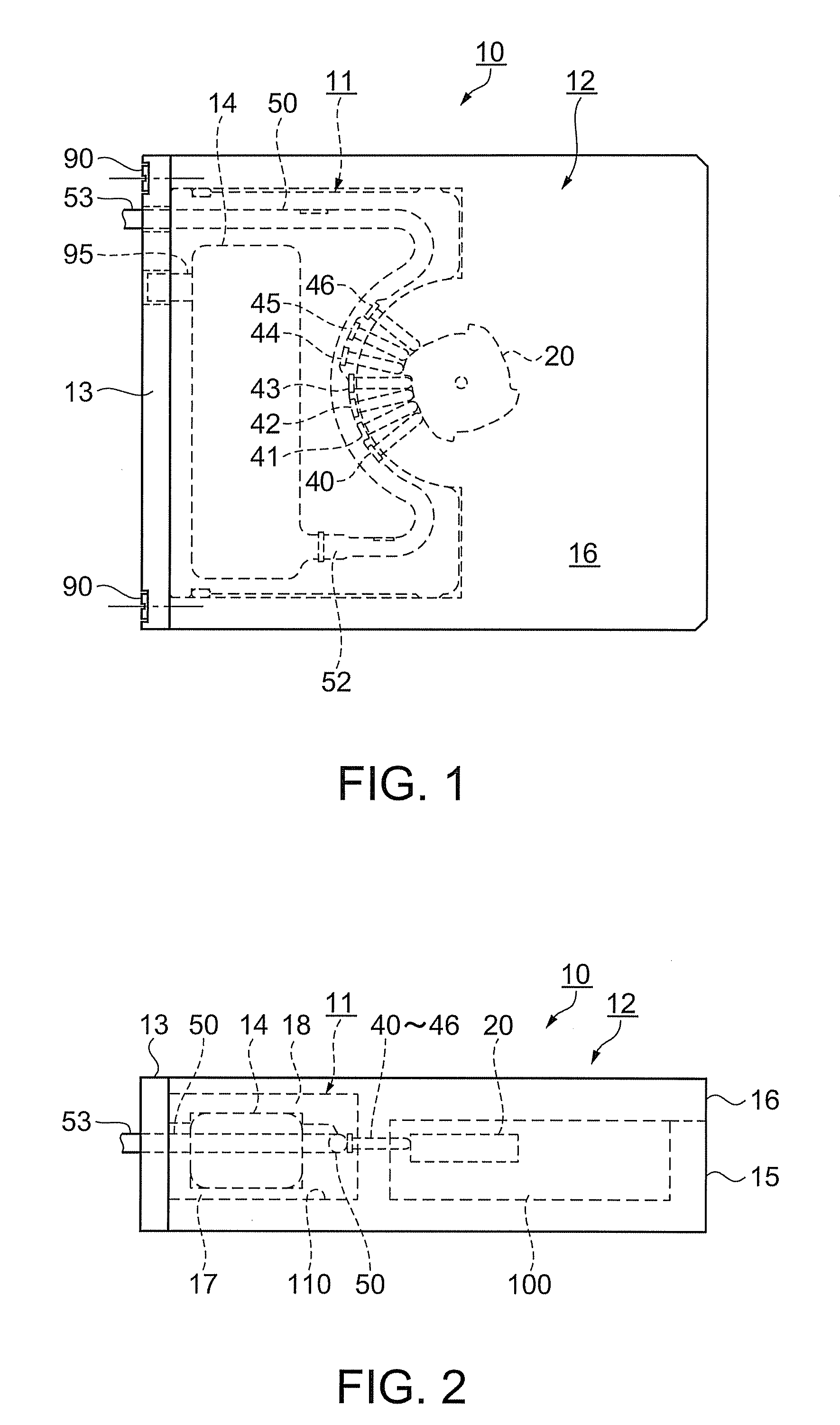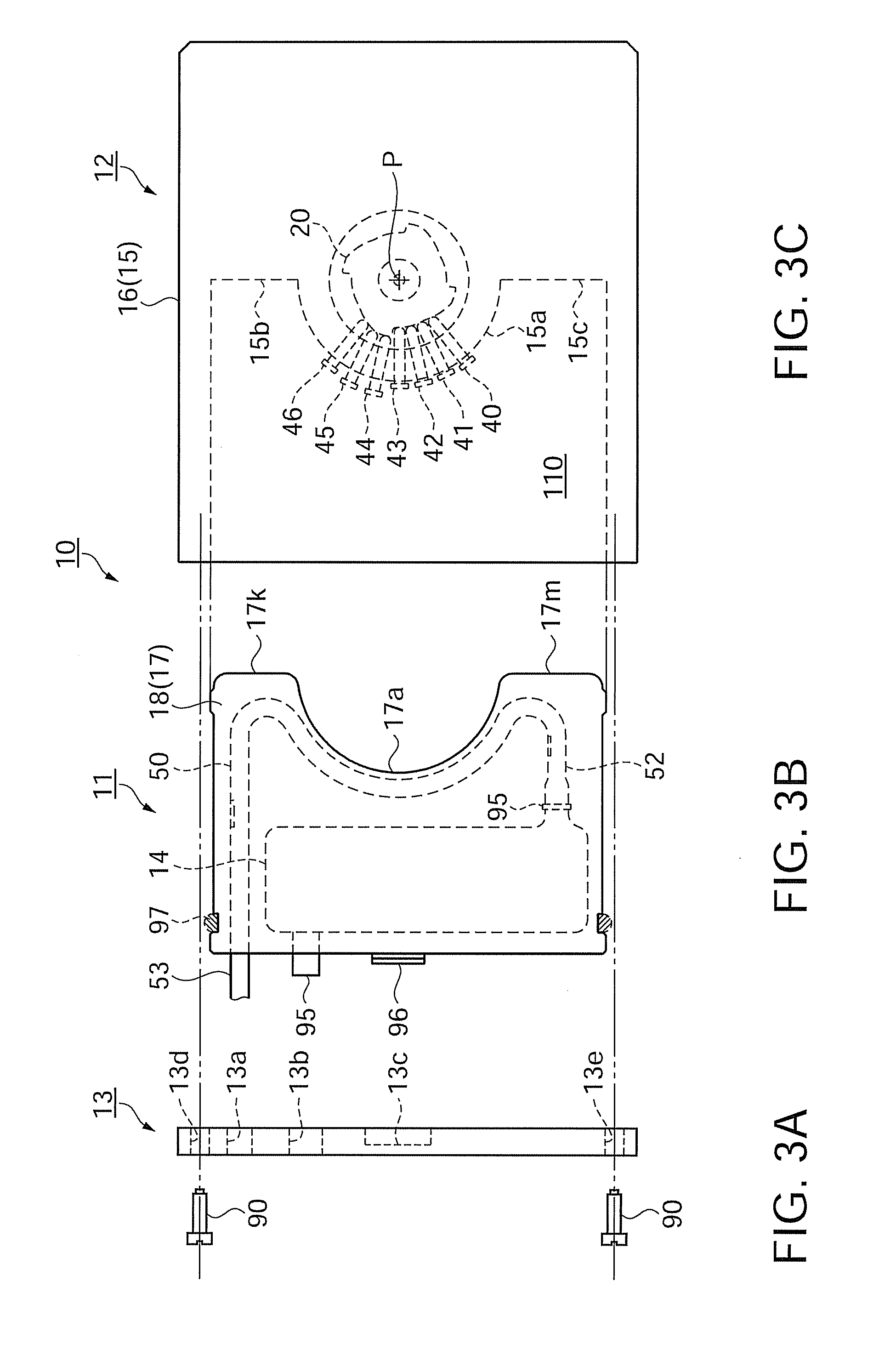Micropump
a micro-pump and pump body technology, applied in the direction of flexible member pumps, machines/engines, positive displacement liquid engines, etc., can solve the problems of reducing the thickness of the structure, reducing the restoration ability of the tube, and reducing the delivery accuracy, so as to achieve the effect of increasing the reliability
- Summary
- Abstract
- Description
- Claims
- Application Information
AI Technical Summary
Benefits of technology
Problems solved by technology
Method used
Image
Examples
first embodiment
[0107]FIG. 1 is a plan view illustrating a general appearance of a micropump according to the first embodiment. FIG. 2 is a front view illustrating the general appearance of the micropump in this embodiment. As shown in FIGS. 1 and 2, a micropump 10 is a one-piece device produced by slidingly inserting a tube unit 11 through an opening formed on the left side surface of a control unit 12 as viewed in the figure and fixing the tube unit 11 to the control unit 12 by a fixing frame 13 as a cover member using fixing screws 90.
[0108]The tube unit 11 has a tube 50 having elasticity and a circular-arc part, a first tube guide frame 17 and a second tube guide frame 18 as tube guide frames for holding the tube 50, and a reservoir 14 communicating with an inlet port 52 of the tube 50 to contain fluid. In the following explanation, the fluid is liquid such as liquid medicine.
[0109]The control unit 12 has a cam 20, a motor and a transmission mechanism (not shown) as a drive unit for giving rota...
second embodiment
[0196]A micropump according to a second embodiment is hereinafter described with reference to the drawings. In the second embodiment, a plurality of fingers have a separation preventing mechanism for preventing separation of the fingers from the control unit 12. In the following explanation, the difference from the first embodiment is chiefly touched upon. Since the fingers 40 through 46 have the same shape, only the finger 43 is discussed as an example.
[0197]FIGS. 8A and 8B are cross-sectional views illustrating a part of the micropump in the second embodiment. FIG. 8A shows a first example, and FIG. 8B shows a second example.
[0198]The first example is now described with reference to FIG. 8A. The first device frame 15 has a finger guide hole 85 into which the finger 43 is inserted. The finger guide hole 85 is formed by sealing the upper opening of the groove 15h of the first device frame 15 by the second device frame 16 similarly to the structure shown in FIG. 6B.
[0199]The finger 4...
third embodiment
[0210]A micropump according to a third embodiment is now discussed with reference to the drawings. In the third embodiment, the first tube guide frame 17 has a tube guide groove 17c into which the tube 50 is inserted, and a tube supporting member for supporting the tube 50. In the following explanation, the difference from the first embodiment is chiefly touched upon.
[0211]FIGS. 9A through 9C illustrate the micropump in the third embodiment. FIG. 9A is a plan view illustrating a part of the micropump, FIG. 9B is a cross-sectional view taken along a line B-B in FIG. 9A, and FIG. 9C is a cross-sectional view taken along a line D-D in FIG. 9A. A first example is initially discussed.
[0212]As illustrated in FIGS. 9A and 9B, the first tube guide frame 17 has the tube guide groove 17c into which the tube 50 is inserted. It is difficult to form a continuous side wall on the tube guide groove 17c along the tube 50 in the direction of the fingers 40 through 46 for advance and retreat movement...
PUM
 Login to View More
Login to View More Abstract
Description
Claims
Application Information
 Login to View More
Login to View More - R&D
- Intellectual Property
- Life Sciences
- Materials
- Tech Scout
- Unparalleled Data Quality
- Higher Quality Content
- 60% Fewer Hallucinations
Browse by: Latest US Patents, China's latest patents, Technical Efficacy Thesaurus, Application Domain, Technology Topic, Popular Technical Reports.
© 2025 PatSnap. All rights reserved.Legal|Privacy policy|Modern Slavery Act Transparency Statement|Sitemap|About US| Contact US: help@patsnap.com



